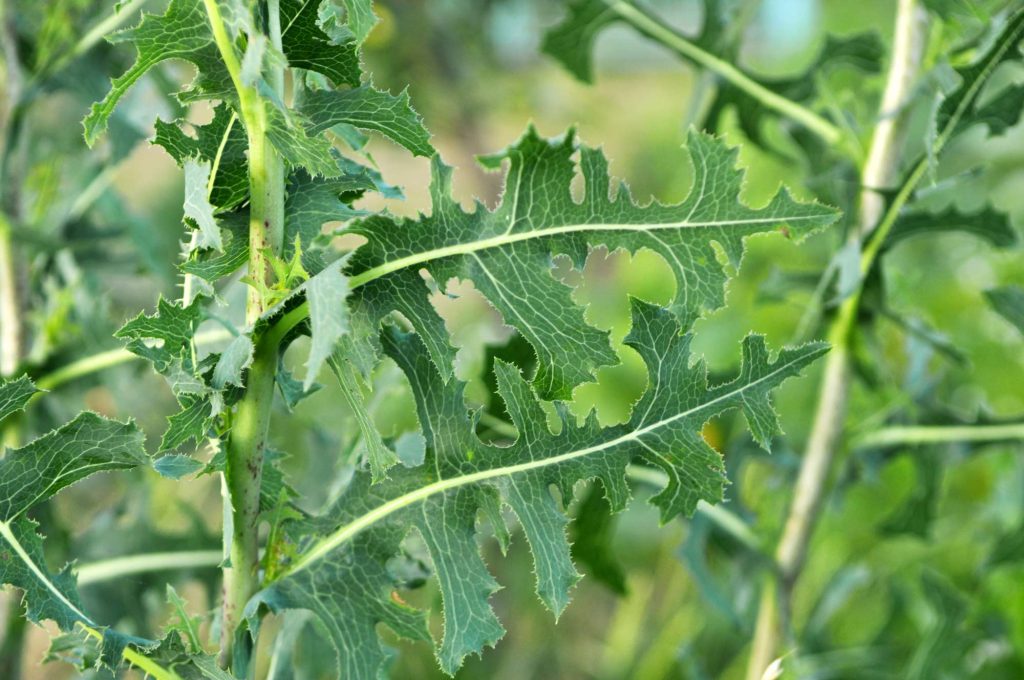How to Stop Prickly Lettuce in Its Tracks

Prickly Lettuce (Lactuca Serriola L.) has posed a huge problem, not only to farmers but also to homeowners with live lawns in their yards. If not stopped, Prickly Lettuce can quickly overtake the lawn and make it even more difficult to control.
Nothing takes away the beauty of a live lawn like unwanted plants growing unevenly on it. Unfortunately, prickly lettuce can be quite invasive and keep spreading if not stopped immediately. But how do you control prickly lettuce if you have no idea what it looks like, how it grows, and its mode of spreading?
This article explains everything you need to know about prickly lettuce and how to stop it before spreading further.
What is Prickly Lettuce?
Prickly lettuce is a biennial plant originating from the Mediterranean region. It’s also referred to as the wild lettuce, China lettuce, milk thistle, and compass plant. The name ‘milk thistle’ is used because the plant bleeds a milk-like white substance when its thistle is broken. Similarly, it’s called a compass plant because its leaves form a north-south placement on the stem, perpendicular to the sun.
Prickly lettuce looks like a dandelion, and you can easily confuse it. However, prickly lettuce has leaves notched at the margin and has spines on the lower side of the leave’s mid-vein. It grows a deep tap root for sufficient water and minerals while its stem goes up to 6 feet.
Its flowers are yellow with seeds in the middle of the flower, just like in a sunflower. These seeds are light and disperse quickly, spreading far away because the wind carries them. If the seeds find a conducive spot like your lawn, they germinate immediately and spread more.
How to Stop Prickly Lettuce
Prickly lettuce is pretty tactical and can prove difficult to deal with. For example, the milky sap on the stems and leaves can quickly clog your equipment and frustrate your efforts. Also, if you wait until the flowers appear, you’ll have more work in the future as the seeds disperse and germinate fast.
When dealing with the invasive nature of the prickly lettuce, you must employ tactics that will stop it from spreading further, even in the wet months. Here are some tips.
#1. Pull it out with your hand
While prickly lettuce invasion can be quite difficult to deal with at all levels, a lawn experiences a small invasion that can be handled through the traditional method of pulling them out. Ensure you get them right after they germinate and get their first two leaves or before the flowers appear.
Prickly lettuce grows a deep taproot, and if you don’t pull it out completely, it will soon regrow into another plant. Therefore, ensure that the ground is moist to allow easy uprooting. Otherwise, you can dig down a little to ensure you pull out the whole root.
After pulling them out, ensure that you dry them in the sun for the whole day before tossing them into the compost. If the plants have already flowered and had mature seeds, compost them separately or toss them in the hottest compost pile so that they can be destroyed before you use the compost on your land.
#2. Lawn Aeration
When the grassroots on your lawn are strong and well-held together, it makes it difficult for the prickly lettuce seeds to germinate and grow properly. Lawn aeration can help you achieve this and stop prickly lettuce before it even becomes a problem.
By definition, lawn aeration involves making small holes in the soil to allow air, water, and other nutrients to get into the grassroots. It’s usually done in the spring and fall seasons when the ground is mostly wet. Here’s how to do lawn aeration.
- Mow the lawn in preparation for the aeration process.
- If the lawn is considerably large, use a power aerator or a spine lawn aerator to help you make the small holes faster. Otherwise, the manual method is better for small lawns but could be quite labor-intensive.
- If you are aerating your lawn for the first time, you may need to go over it the second time to ensure that every area is covered.
- Water the lawn upon completion.
- Add some lawn food with nutrients to the punctured and watered soil.
The grassroots will spread more and knit together, creating a strong grass network on your lawn. The compacted grass will not only make your lawn look livelier but also prevent weeds like prickly lettuce from germinating.
#3. Herbicides
Prickly lettuce is mostly resistant to common herbicides, but there are those that work effectively. You can choose to use non-selective inorganic herbicides or go for organic herbicides that are friendly to your environment at home.
Effective inorganic herbicides should contain glufosinate, glyphosate, or paraquat. However, prickly lettuce gets more difficult to control once it reaches the flowering stage and so you can use pre-emergence herbicides containing isoxaben, atrazine, oxadiazon, chlorsulfuron, oxyfluorfen, metribuzin, or terbacin to control even the germinating seeds.
On the other hand, if you choose to use organic herbicides, go for those containing clove oil (eugenol), as it works effectively on weeds with broad leaves like prickly lettuce.
Fit Turf Is Here To Help You Get Rid of Prickly Lettuce
When dealing with weeds as invasive as prickly lettuce, the best approach is the one that ensures you stop them before they become a problem for you. Land aeration works well because it compacts the ground and creates a stronger grass-root network such that the prickly lettuce doesn’t find a way to overtake.
Taking care of your lawn and trying to eliminate prickly lettuce on your own can be quite a task. While you can brave the work and do it yourself, a little help will go a long way. Fit Tuff is your partner in making sure that your lawn is free from prickly lettuce.
Contact Fit Turf today to get the help you need.

